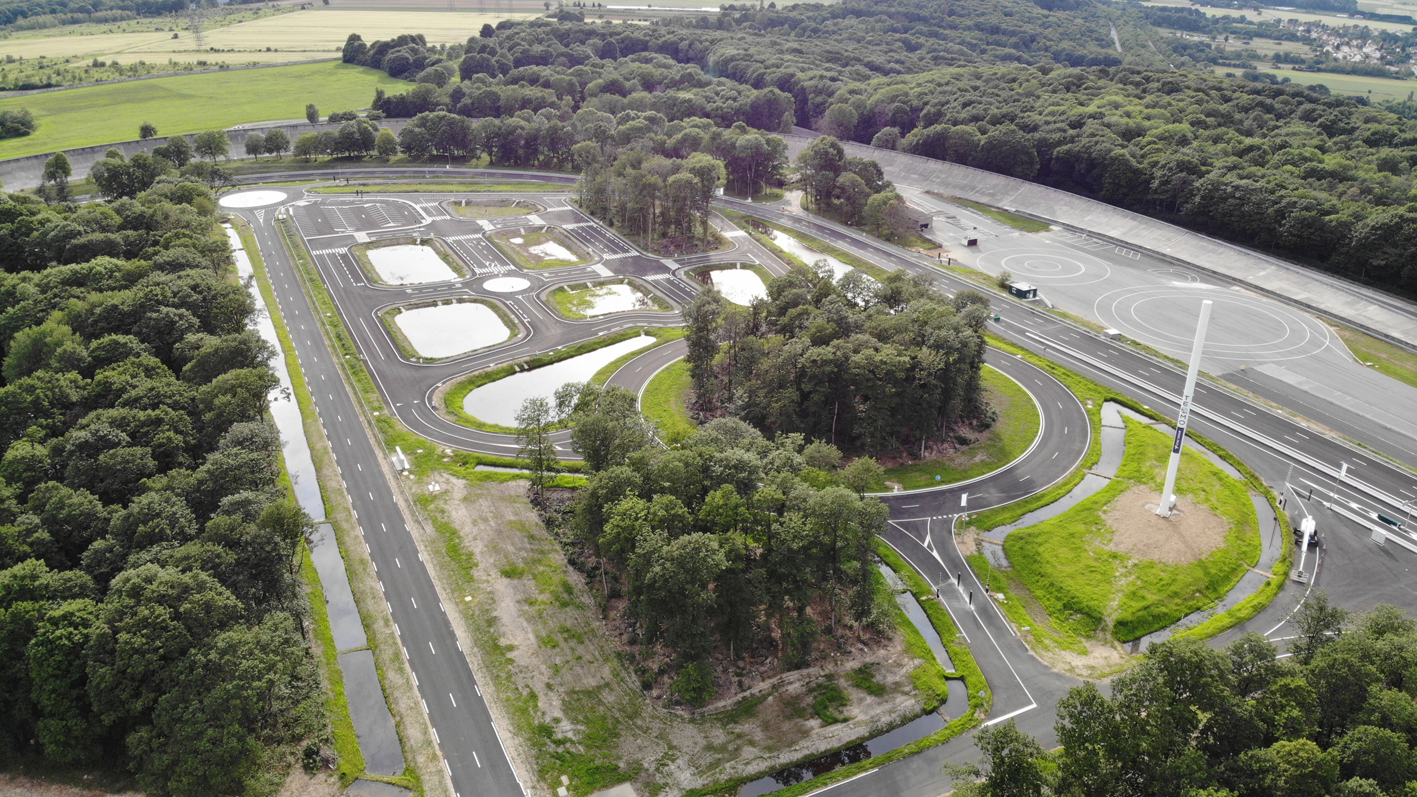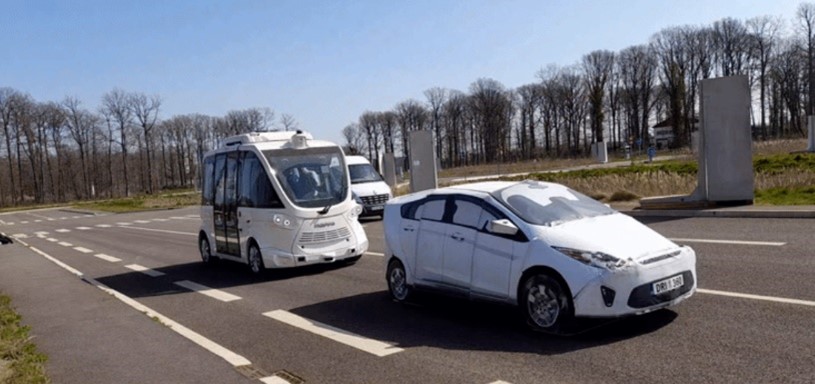Final development tweaks and validation testing of the remote supervision capabilities of Navya’s autonomous shuttle have taken place at UTAC’s Teqmo site in Linas-Montlhéry, France. The auto maker’s engineers worked closely with the team at UTAC to undertake the assessments. Navya took full advantage of the Euro NCAP crash test equipment and the AV specialist facilities available at UTAC.
Specifically, Navya’s hypervision technology was analyzed and fine-tuned in an urban environment at the facility. Braking tests were performed with a mobile and fixed target in different scenarios, such as braking as a vehicle in front of the shuttle slowed down (with several decelerations), and the soft target folding in front of the shuttle. Development work of the vehicle’s sensors, identification algorithms and braking triggering were performed in comfort and safety driving profiles in several scenarios. The safety behavior of the shuttles was validated with conclusive results. Furthermore, a trial of the technological building blocks required for remote supervision of a Level 4 autonomous shuttle fleet in an urban environment (representative in terms of infrastructure, connectivity and other users) was carried out. These tests successfully validated technological and safety milestones essential to the deployment of Level 4 driverless Navya shuttles.
“We have been working with Navya since the opening of Teqmo in 2019. The tests conducted at the UTAC Linas-Montlhéry site used all the features of the infrastructure and demonstrate the know-how of experts and the technologies implemented. We would like to thank Navya for the trust they have placed in us,” commented Jérôme Paschal, CTO of UTAC.
Olivier Le Cornec, CTO at Navya added, “Working with UTAC was an obvious choice. Their reputation and reliability in this field is well established, providing Navya with secure development through a recognized and certified organization.”



